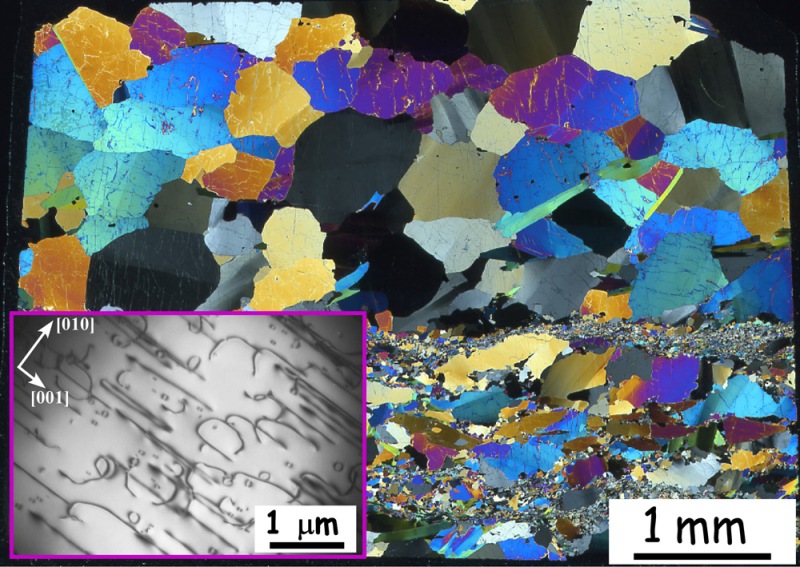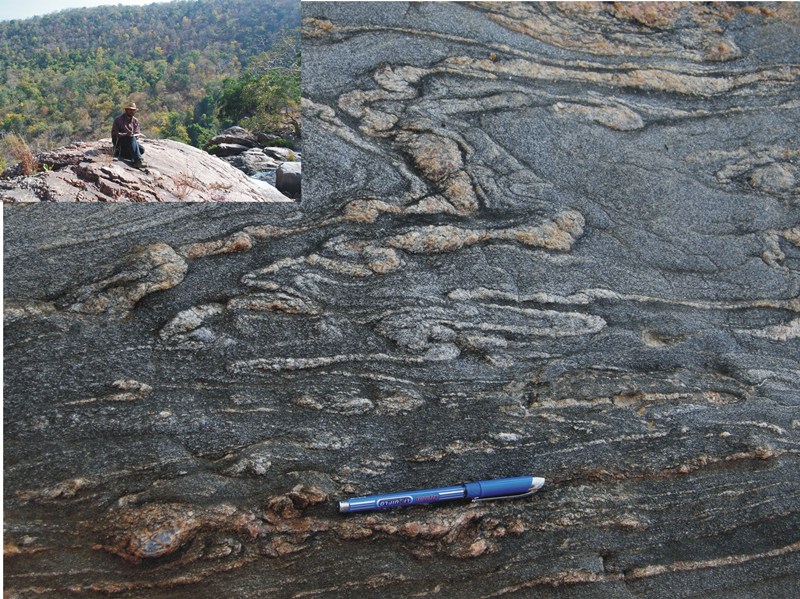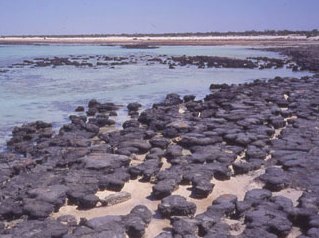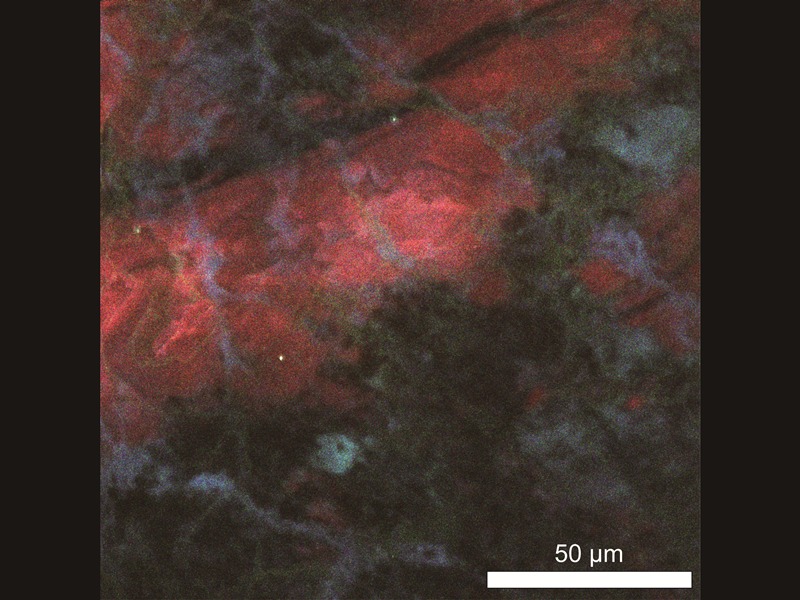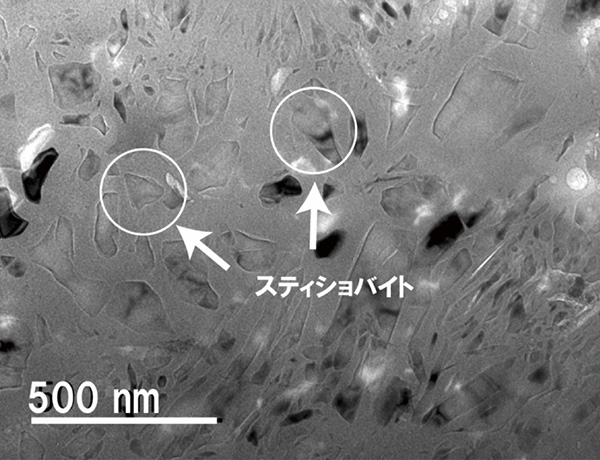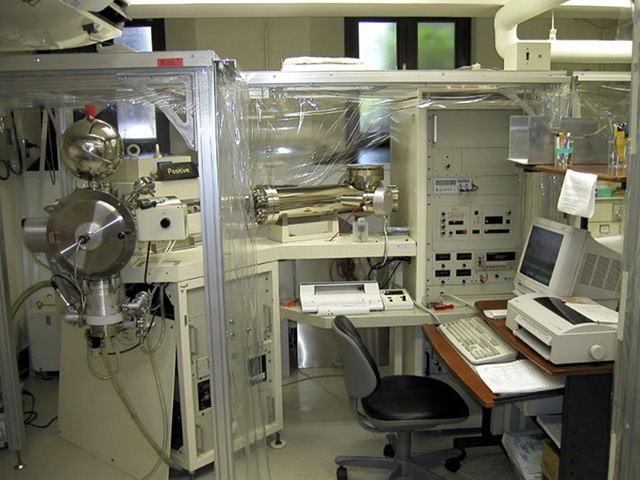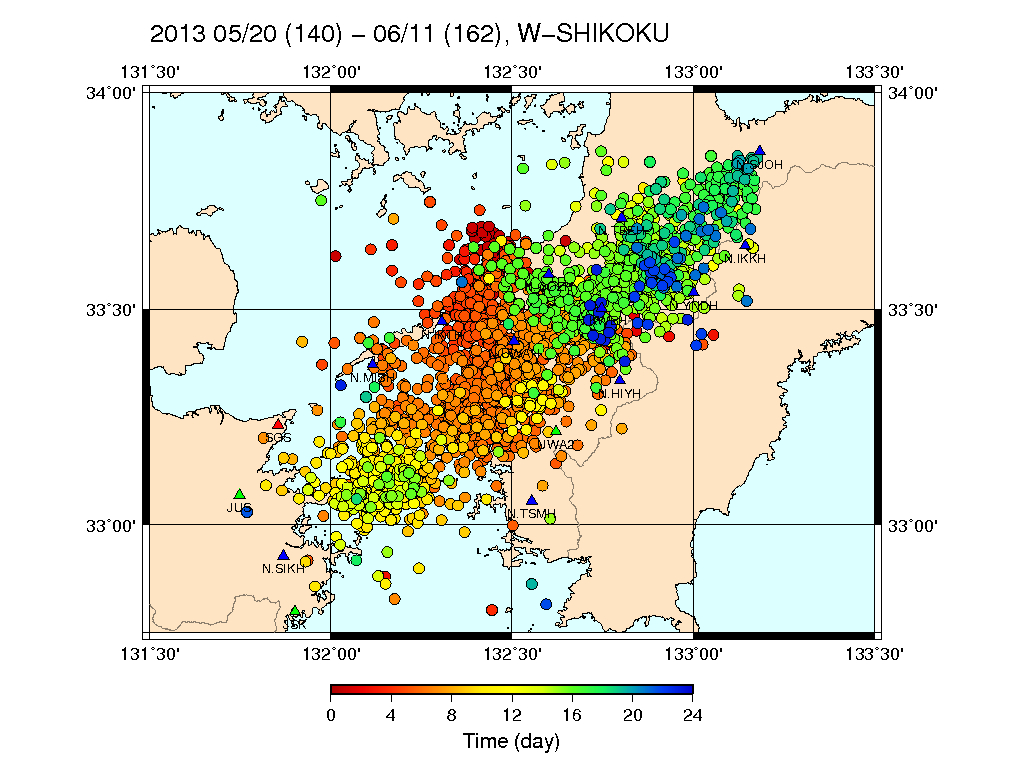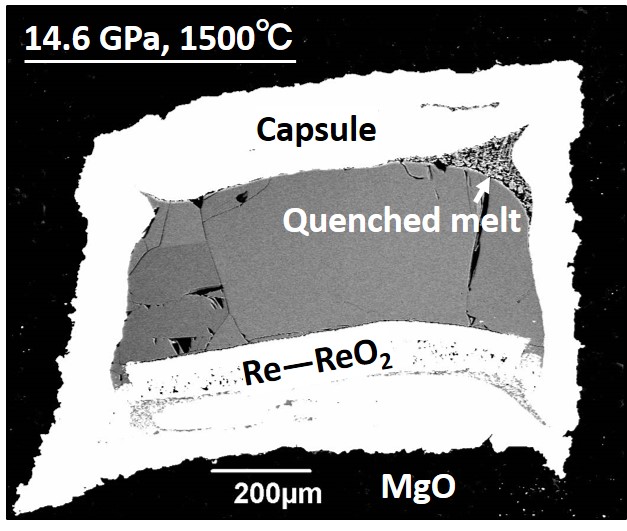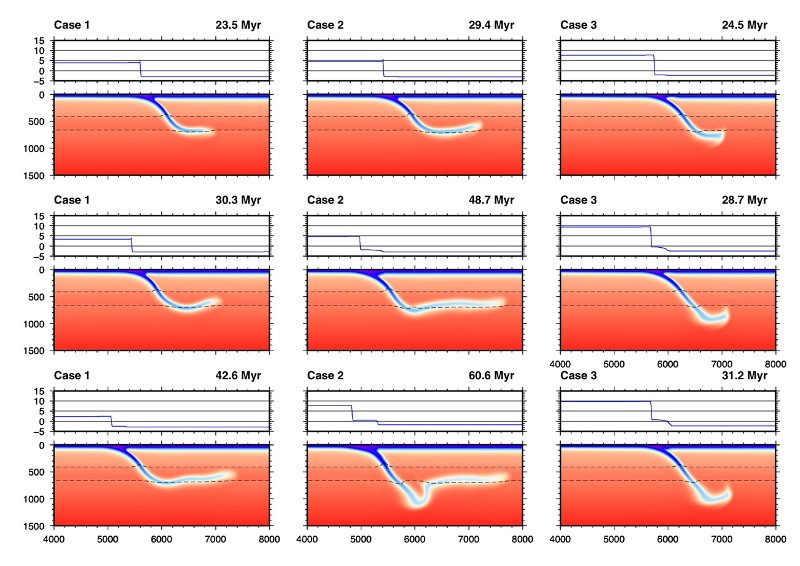Earth and Planetary Material Science
Rocks and minerals that record the history of the Earth from about 4 billion years ago to the present are exposed on the Earth’s surface, as well as rocks and minerals that have come from the Earth’s interior at depths of 400 to 670 km. The Earth and Planetary Materials Science Group collects such rocks and minerals from all over the world and performs chemical composition analysis, dating, deformation texture analysis, structural analysis, deformation experiments, friction experiments, etc. to elucidate the formation history of the continents and the Japan Islands, elucidate the mechanisms of dynamic deformation phenomena occurring on Earth, and conduct research into the crystallographic properties of minerals.
ANDO, Jun-ichi (Professor)
KATAYAMA, Ikuo (Professor)
DAS, Kaushik (Professor)
OKAZAKI, Keishi (Associate Professor)
OHKAWA, Makio (Assistant Professor)
- Rock rheology (properties related to fracture and flow)
- Fault dynamics and earthquake generation
- Movement and circulation of fluid in the Earth’s interior
- Precambrian plate tectonics (mainly on the Indian subcontinent)
- Formation history of continental and island arc crusts in East Asia and the Japan
- Reconstruction of the paleo-Pacific crust from ophiolites
- Physical and chemical properties of minerals based on crystallography
Earth and Planetary Chemistry
Earth and Planetary Chemistry group is working on cosmochemistry for extraterritorial materials (meteorite and cosmic dust), geochemistry for magma dynamics, chemical evolution experiments for life precursors, experimental paleontology for fossil, sedimentary rocks, and microbe to understand the evolution for the solar system, the Earth, and life for 4.6 billion years. We use a Thermal Ionization Mass Spectrometer (TIMS), Inductively Coupled Plasma-Mass Spectrometer (ICP-MS), pyrolysis Gas Chromatography-Mass spectrometer (pyrolysis-GCMS), electron microscope (e.g., SEM, TEM, and EBSD), and synchrotron radiation (STXM) to achieve our goal.
SHIBATA, Tomoyuki (Professor)
SHIRAISHI, Fumito (Professor)
YABUTA, Hikaru (Professor)
AKIZAWA, Norikatsu (Associate Professor)
KOIKE, Mizuho (Associate Professor)
MIYAHARA, Masaaki (Associate Professor)
YOSHIKAWA, Masako (Professor (Special Appointment))
HIRAYAMA, Takehiro (Assistant Professor (Special Appointment))
- Magma geochemistry and its application to material cycle between the crust and mantle
- Space dust collected from Antarctica and the International Space Station
- Synthesis and nano-observation of primitive cellular functional materials leading to the origin of life
- Water-rock reactions that occurred on the surface of Mars
- Shock metamorphic history recorded in meteorites
- Environmental changes from microbial mineralization
- Studying sedimentary rocks using paleontological and geochemical methods
Earth and Planetary Physics
The interiors of the Earth and planets have been moving for a long time since their formation, and have differentiated into their current structure. Investigating the current internal structure leads to understanding the properties of materials and their internal movements, and conversely, investigating the properties and movements of materials allows us to understand the process by which the current internal structure was formed. The Earth and Planetary Physics Group is conducting research into the mechanisms of movement of the solid parts of the Earth and planets and their internal structures using methods such as seismic wave analysis, high-temperature and high-pressure experiments, and numerical simulations.
INOUE, Toru (Professor)
SUDA, Naoki (Professor)
KAWAZOE, Takaaki (Associate Professor)
NAKAKUKI, Tomoeki (Assistant Professor/Associate Professor (Special Recognition))
TAKAICHI Goru (Assistant Professor (Special Appointment))
NAKAGAWA Takashi (Visiting Associate Professor)
- Slow earthquakes
- Internal structure of the Earth
- Phase changes and flow of planetary materials under high temperature and pressure
- Properties of magma in the Earth’s interior
- Mantle convection and fluid movement
Integrated Earth and Ocean Sciences / Center for Developing Pioneers in Science, JAMSTEC Kochi Institute for Core Sample Research
Core samples drilled from various regions on the ocean floor and land record various geological phenomena, environmental changes, and material cycles occurring on the Earth’s surface and interior. By systematically analyzing these samples, we can gain knowledge about the Earth’s past, present, and future. From this perspective, we are working on the following research themes.
ISHIKAWA, Tsuyoshi (Visiting Professor)
TOMIOKA, Naotaka (Visiting Professor)
HIROSE, Takehiro (Visiting Professor)
HOSHINO, Tatsuhiko (Visiting Professor)
MORONO, Yuki (Visiting Professor)
NAKADA, Ryoichi (Visiting Associate Professor)
- Environmental changes and material cycles on the Earth’s surface through the analysis of sediments and rocks
- Biogeochemical material cycles on the ocean floor
- Rheology of fault zones and the mechanism of earthquake occurrence
- Development of analytical techniques of isotopes and trace elements in core samples

